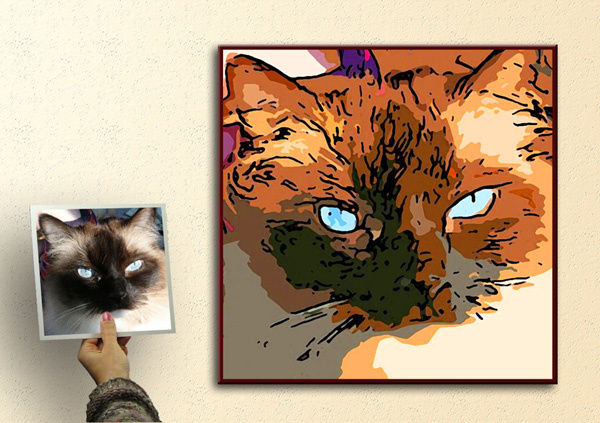There are multiple styles of art, and many mediums to convey artistic talent. Some works of art are woven into tapestries, moulded from clay, or even sculpted from iron, but just as many are carved from stone or wood and captured on glossy photographs. Of the artistic styles that are painted onto canvas there are several movements that have led to the most well-known styles of art, starting during the Renaissance and continuing through neoclassicism, romanticism and realism. This article focuses on the styles of art that influenced the creation of modern and contemporary.

Impressionism
Impressionism, when it started, was considered to be a radical outlook on art and has been said to be the start of modern art as we know it. It was developed in France during the 19th century and the style was focused more on creating impressions of the subject, rather than a realistic rendering by use of light and colour. Subjects were composed of outdoor landscapes instead of people and generally had bright, unblended colours with very little detail.
IMAGE
This style includes artists such as:
Claude Monet with “On the Cliff at Pourville”
(http://library.artstor.org/library/secure/ViewImages?id=%2FDFMaiMuOztdLS0wdD59Rnks&userId=gDZDdw%3D%3D&zoomparams=)
Pierre Aguste Renoir with “Seine at Champrosay”
Pointillism
Pointillism is where the artist uses small dots of individual colour or extremely short strokes of paint to make up a larger picture. From a distance the individual dots or strokes form a blended picture. Pointillism was originally based on impressionist art, however while the point of impressionism was to have colour remain unblended, pointillism generates a sense of the colours merging together to form the subject. This style includes the artist Georges-Pierre Seurat with “A Sunday on La Grande Jatte”.
IMAGE
(http://library.artstor.org/library/secure/ViewImages?id=%2FDFMaiMuOztdLS0wdD59R3wt&userId=gDZDdw%3D%3D&zoomparams=)
Post Impressionism
Post Impressionism, as the name implies, began after the impressionist movement during the 19th century and both emulated and rejected the impressionistic values. The canvases were primarily still life’s and landscapes, and bright colours were still used with a greater emphasis given to light and shadows. The brush strokes were still short and based on the artists impression rather than a realistic recreation, but there was much more self-expression of the artist in the post-impressionist style. Artists include:
Vincent Van Gogh with “The Stary Night”
IMAGE
(http://library.artstor.org/library/secure/ViewImages?id=8D1Cdjk4RDUwLi07eTx%2FQn4%3D&userId=gDZDdw%3D%3D&zoomparams=)
Fauvism was an artistic movement that was short but memorable, lasting only a few years at the beginning of the 20th century. The French term “Fauve” translates to “wild beast” and perfectly explains the oftentimes violent brushstrokes of the artists instead of short strokes or small points of colour. Fauvism started the transition away from the impressionist and post-impressionist artwork, but still retained the use of bright bold colour. Bold distortions of form were the norm, and the idea of three dimensional space in paintings were rejected. Fauvists artists include:
Maurice De Vlaminck with “Dancer from ‘Rat Mort'”
IMAGE
(http://library.artstor.org/library/secure/ViewImages?id=8CJGczI9NzldLS1WEDhzTnkrX3ksc1N6fSQ%3D&userId=gDZDdw%3D%3D&zoomparams=)
Expressionism began in Germany at the start of the 20th century. The artists used distorted and exaggerated shapes in order to achieve the most emotional response possible, vibrant colours were blended together with shocking pinks next to intense blues. Instead of painting the artists impression of the subject, as had been the focus in both the impressionist and post-impressionist movement, the artists wanted to express the emotional response that the subject invoked in them. This style includes the artist Marc Chagall with “Birthday”.
IMAGE
(http://library.artstor.org/library/secure/ViewImages?id=8D1Cdjk4RDUwLi07eTx8QXI%3D&userId=gDZDdw%3D%3D&zoomparams=)
Cubism
Cubism is when geometric shapes are used in the painting to portray the subject in a fractured and distorted manner. The artist rejected the use of a single viewpoint and instead painted fragments of the subject from several different points of view while simplifying the form. Cubist artists include:
Pablo Picasso with “Dora Maar in an Armchair”
IMAGE
(http://www.metmuseum.org/Collections/search-the-collections/210007255)
My name is Nisha, I love to write about art, fashion, design and beauty. I have many years experience within the art industry. I currently represen a site called http://www.pretty-small-shoes.com.

